Are you planning to visit Machu Picchu, but are not sure which circuit to choose? In recent years, entry to the citadel has been organized into different routes, and picking the right one can be confusing—especially if it’s your first time. Among all the options, Circuit 2 is considered the classic route, the most complete way to explore every corner of this world wonder. In this guide, you’ll find everything you need to know about the route: what it includes, how to book your ticket, practical tips, and why it’s the best way to explore the Inca citadel.
Table of contents
- What Are the Circuits of Machu Picchu?
- Why Is Circuit 2 the Most Popular Way to Experience Machu Picchu?
- The Routes of Circuit 2 Machu Picchu
- Archaeological Sites You’ll Find on Circuit 2 Machu Picchu
- Best Time to Visit Circuit 2 Machu Picchu
- Ticket Availability by Season for Circuit 2 Machu Picchu
- Ticket Prices for Routes 2A and 2B at Machu Picchu
- How to Book Your Ticket for Circuit 2 Machu Picchu 2026
- How to Get from Aguas Calientes to Machu Picchu?
- Circuit 2 Machu Picchu: Route 2A vs. Route 2B
- Other Circuit Options in Machu Picchu
- Recommended Experiences to Complement Your Visit
- Frequently Asked Questions
- You may also be interested in:
What Are the Circuits of Machu Picchu?
The circuits of Machu Picchu are official routes established to visit the Inca citadel in an orderly and safe way. Since 2017, the Ministry of Culture of Peru has implemented this system to regulate the flow of visitors, ensure the conservation of cultural and natural heritage, and provide an organized tourist experience.
In 2024, the regulations were updated, establishing three primary circuits, each with different internal routes, for a total of 10 ways to explore this world wonder responsibly and sustainably. But which one should you choose? Up next, we’ll explain why most visitors opt for Circuit 2.
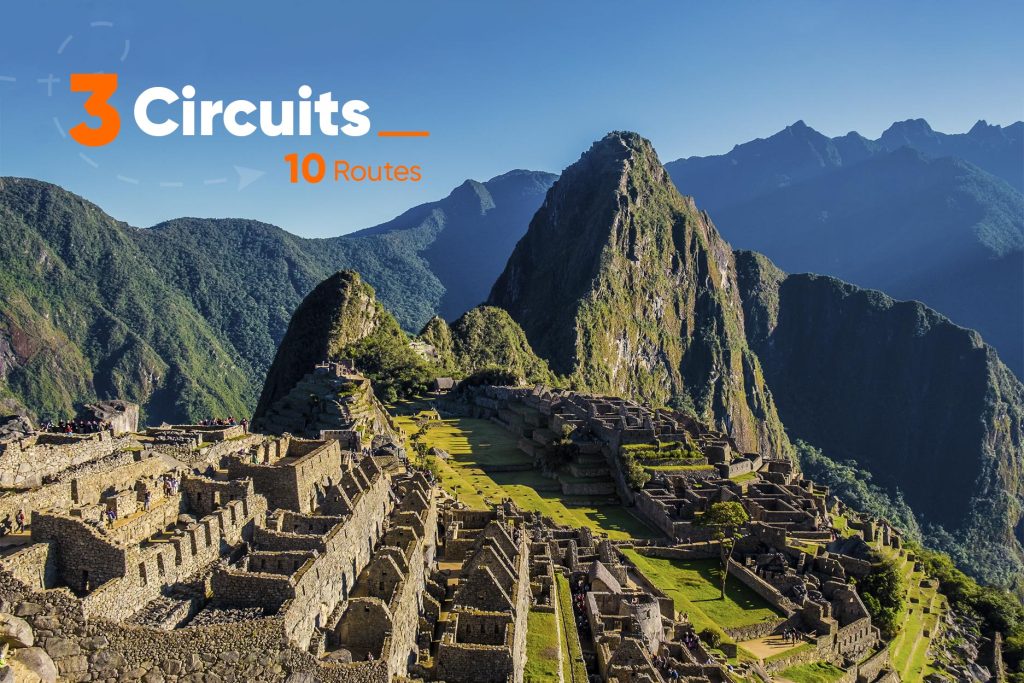
Why Is Circuit 2 the Most Popular Way to Experience Machu Picchu?
While all the Machu Picchu circuits have their own unique charm, it’s important to highlight that Circuit 2 is the ideal route for a first-time visit to this world wonder. It offers a well-balanced path that combines the best viewpoints from the upper areas with the most essential inner sectors of the citadel, providing a truly complete experience.
Unlike other routes, Circuit 2 not only gives you the chance to capture the iconic classic photo from the highest part of the site—where the panoramic views are breathtaking—but also allows you to walk among temples, houses, and plazas of the Inca citadel built more than 500 years ago.
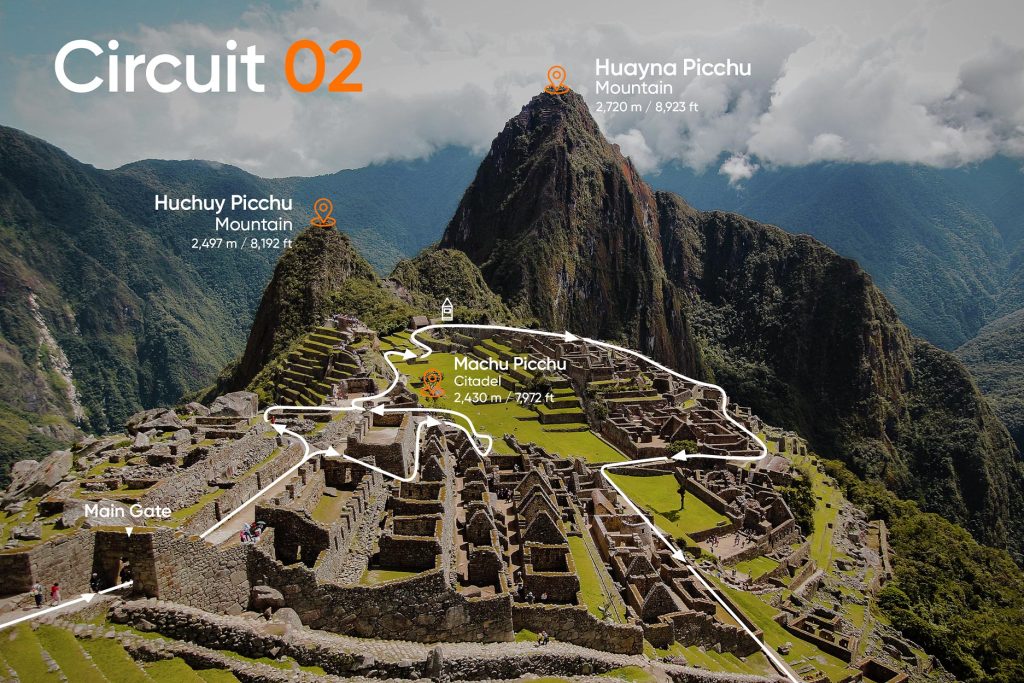
The Routes of Circuit 2 Machu Picchu
Circuit 2 Machu Picchu offers two internal routes that, while sharing most of the path, feature minor differences that allow visitors to appreciate specific areas within the Inca citadel. For this reason, many travel agencies tend to confuse them; to avoid mistakes when purchasing your ticket, we always recommend checking the official website of the Ministry of Culture.
This circuit is one of the most complete and versatile: it is suitable for families, since it requires little physical effort; ideal for photographers, who will be able to capture the most iconic postcard views; and perfect for travelers interested in Inca history and culture, as it allows you to explore temples, plazas, and viewpoints in greater detail.
Please note that both Route 2A and Route 2B are in high demand and have designated entry times, so it is essential to purchase your tickets one to three months in advance, depending on the season of your trip (see the section on the best time to visit Circuit 2). Below, we share the technical details of the route and a breakdown of each option.
Technical Details of Routes 2A and 2B of Machu Picchu
- Total Duration: Approximately 2 hours and 30 minutes
- Distance: 1.5 km in total
- Difficulty: Low. Ideal for all ages and fitness levels
- Entry Times: From 6:00 a.m. to 3:00 p.m., in one-hour intervals
- Daily Capacity: Ample, with multiple time slots available (see the section on Ticket Availability by Season)
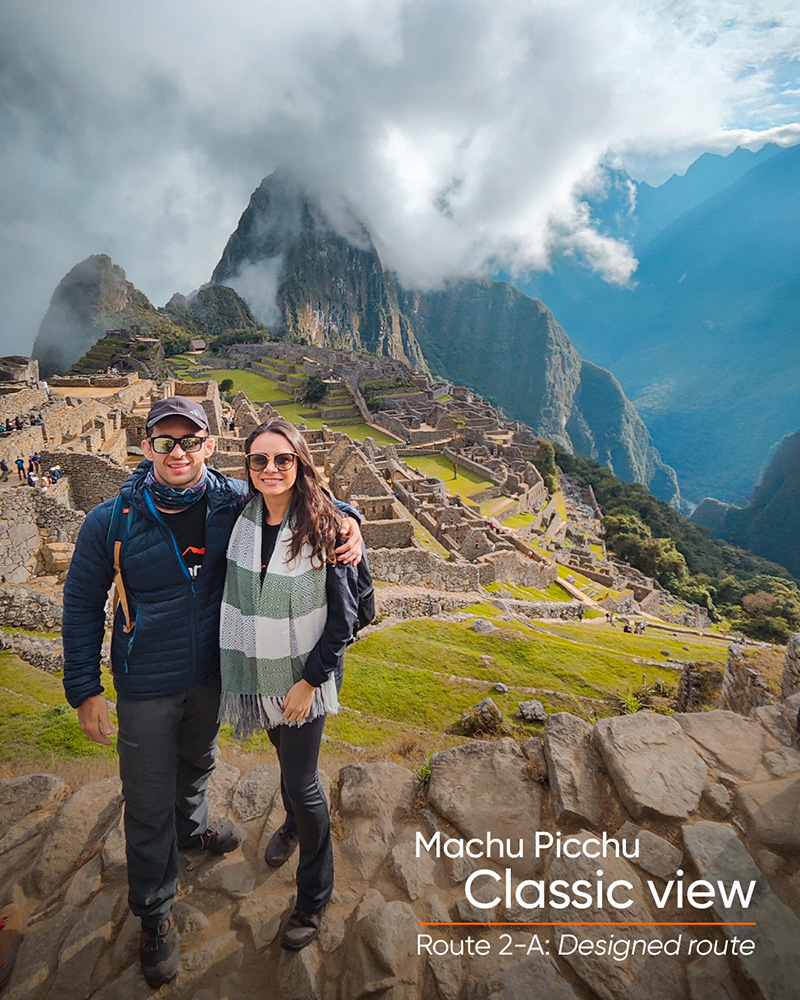
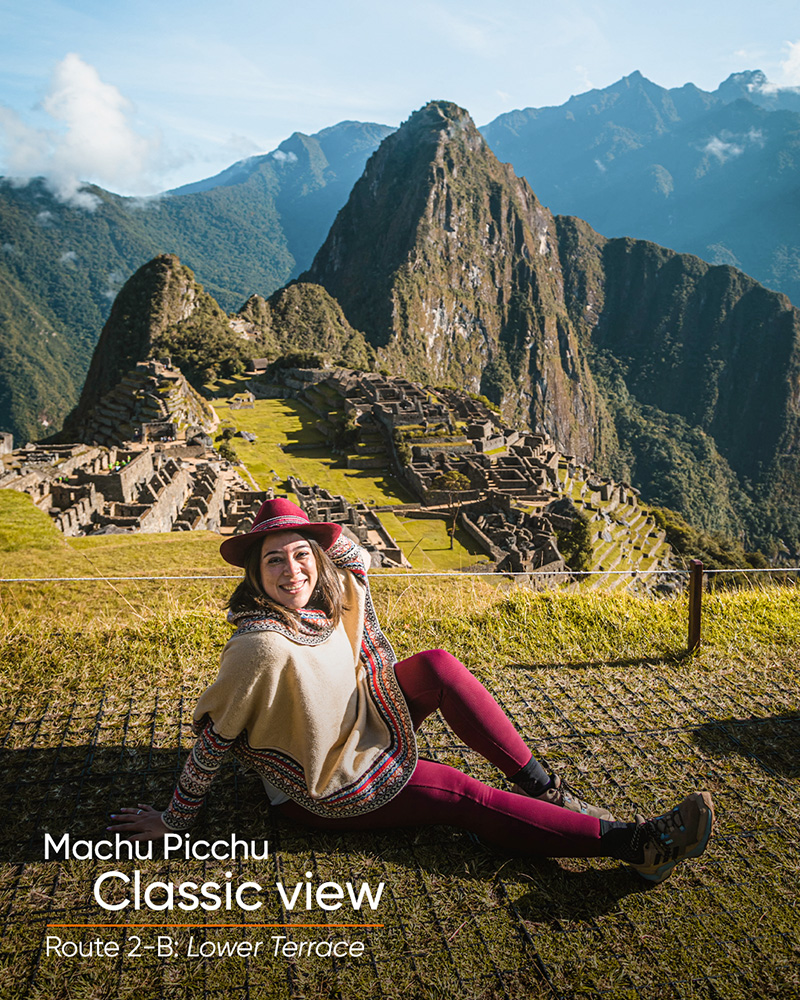
Route 2A: The Classic Designed Route
Route 2A, or the classic route of Machu Picchu, is ideal for travelers who want to exert less physical effort while still experiencing the citadel’s most iconic sites. On this path, you’ll capture the classic photo of the world wonder from a panoramic viewpoint slightly lower than that of Route 2B—yet equally impressive. In addition, this route descends to the Temple of the Sun, one of the most remarkable archaeological attractions, which also serves as a viewpoint overlooking the Inca citadel.
Along the way, you’ll enjoy unforgettable panoramic views from the lower platform of the Guardian’s House and visit iconic constructions such as the Temple of the Three Windows, the Sacred Rock, the Eastern Qolqas (Inca storehouses), the Water Mirrors Complex, Pisonay Square, among other points of interest that make this experience one of the most complete.
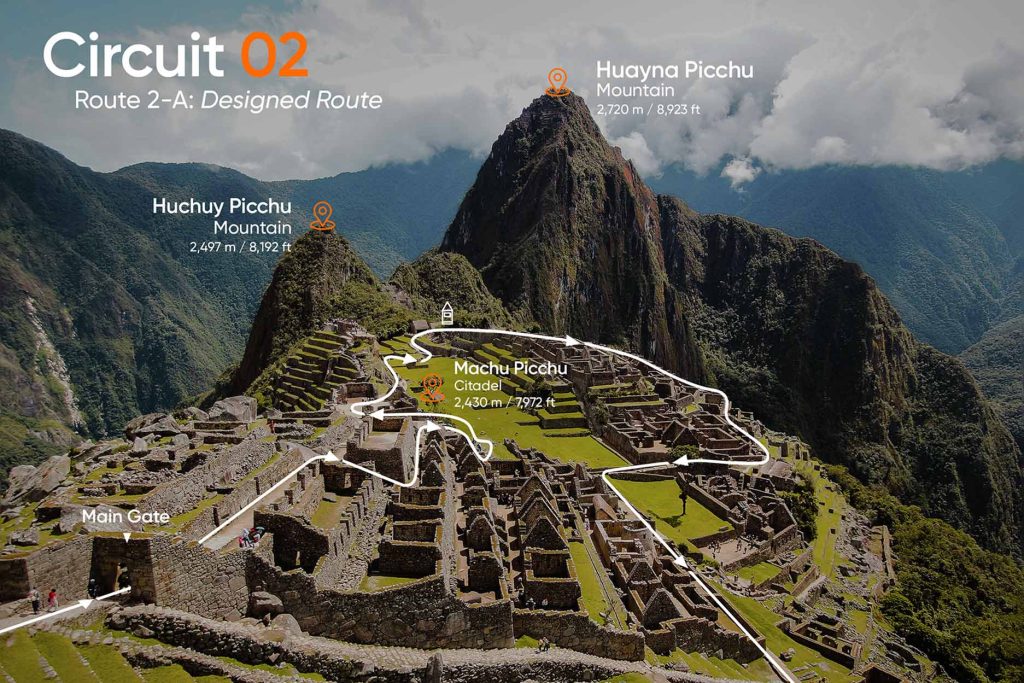
Route 2B: The Lower Terrace Route
Route 2B, also known as the Lower Terrace of Machu Picchu, is the ideal option for those who want a higher panoramic view and are willing to put in a bit more physical effort. Although the difference compared to Route 2A is minimal, this route offers the opportunity to capture the classic photo of the world wonder exactly as you’ve seen it on the most famous postcards online.
In addition, this route is the most popular because it balances the natural beauty and the architectural splendor of Machu Picchu. Along the way, you’ll see highlights such as the Sacred Plaza (also known as the Plaza of the Temples), the Sacred Rock, the Temple of the Twelve Niches, and the Water Mirrors Complex, among others. You’ll also enjoy panoramic views of two of the citadel’s sacred mountains: Huayna Picchu and Huchuy Picchu.
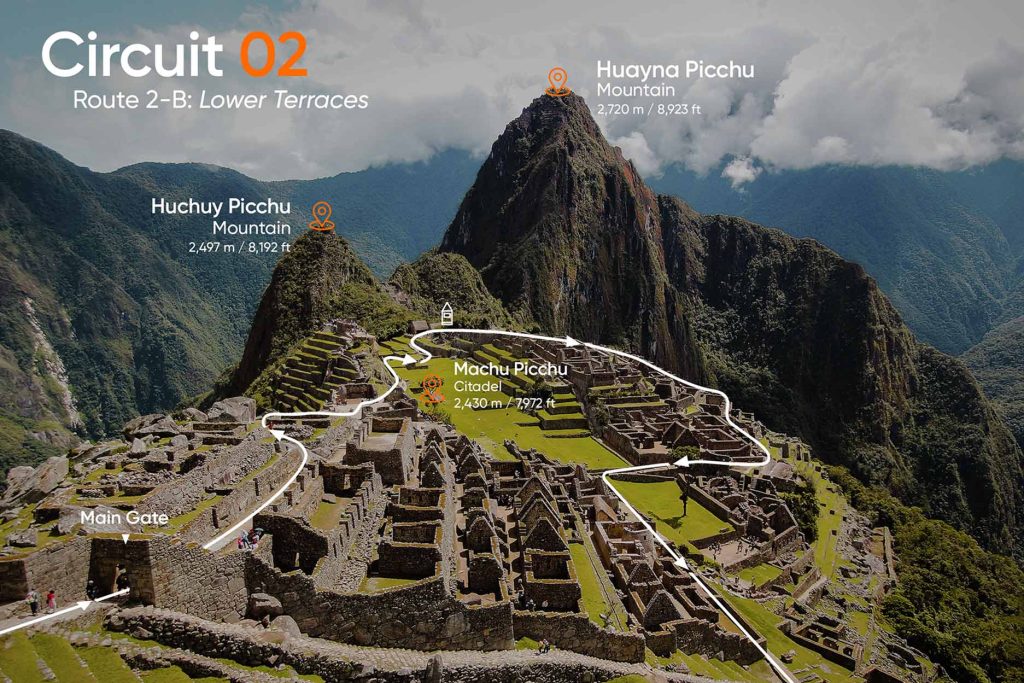
Archaeological Sites You’ll Find on Circuit 2 Machu Picchu
Circuit 2 Machu Picchu is one of the most popular among visitors, as it not only offers spectacular panoramic views but also allows you to enter the very heart of the Inca citadel. Along the way, you’ll be able to explore temples, residences, plazas, the industrial sector, and other ceremonial spaces that showcase the architectural greatness of the Incas. Below, we present its main archaeological highlights:
Guardian’s House
The Guardian’s House is one of Machu Picchu’s most iconic structures, thanks to its strategic location, from which the classic panoramic view of the Inca citadel can be seen. Although its architecture is simple, it stands out as the only building with a thatched roof (ichu) and, in Inca times, served an essential role in surveillance and controlling access to the citadel.
It is located in the upper part of the sanctuary, about a 15-minute walk from the entrance. From this privileged spot, you can admire the entire archaeological complex framed by the stunning mountain formations of Huayna Picchu and Huchuy Picchu, two of the three most representative peaks of Machu Picchu.
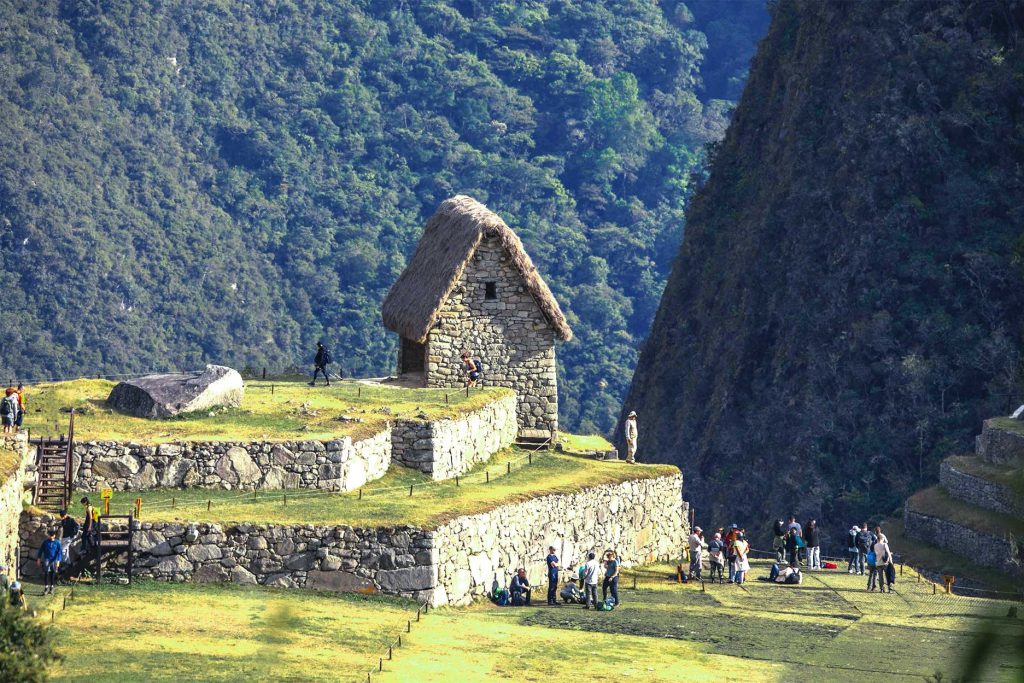
Agricultural Zone
The Agricultural Zone of Machu Picchu is located in the uppermost part of the sanctuary, separated from the urban area by a dry moat that functioned as a natural drainage system. Its impressive terraces are a testament to the Incas’ advanced agricultural knowledge, enabling them to maximize land use, control erosion, and regulate soil temperature, thus protecting crops from climatic variations.
More than 500 years ago, these terraces were used to cultivate maize, Andean tubers, coca, and a variety of medicinal herbs and local plants. This agricultural area not only supplied food to the citadel but also provided products for Inca ceremonies and rituals.
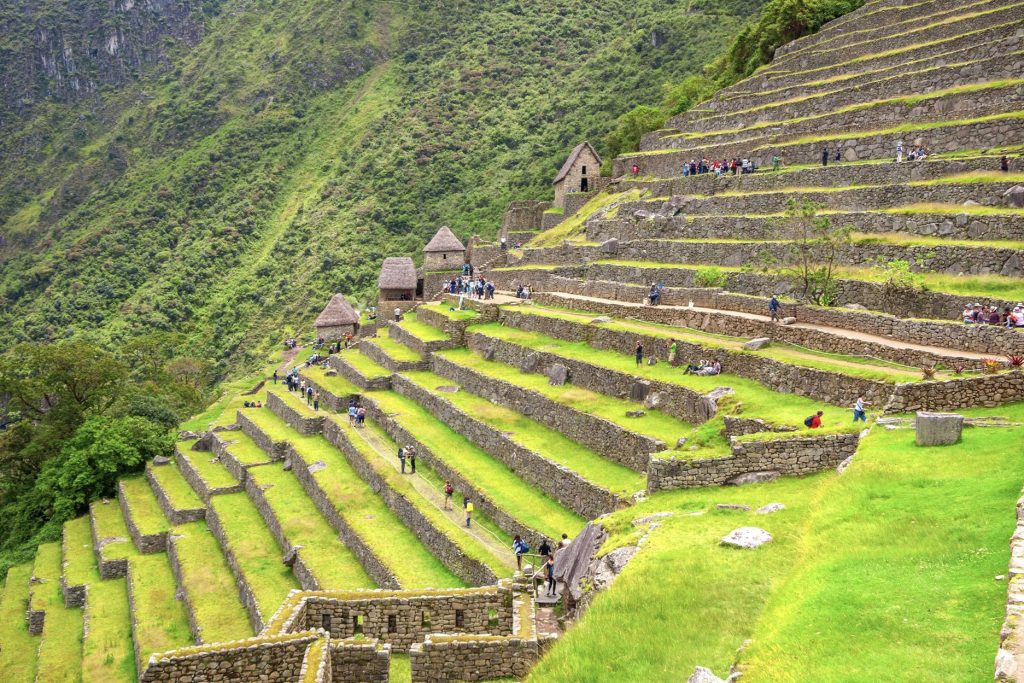
Temple of the Sun
The Temple of the Sun is one of the most sacred and iconic structures of Machu Picchu. Built atop a massive natural rock and next to the Royal Residence, it stands out for its exceptional construction system and its semicircular design, a rare feature within the citadel. Its trapezoid-shaped windows were precisely aligned for astronomical purposes, marking the sunrise during the solstices. This made it a crucial solar observatory and a space dedicated to the worship of Inti, the Incas’ principal deity.
Beneath the temple lies a subterranean chamber known as the Cave or Royal Mausoleum, which likely served funerary or ritual purposes. Beyond its remarkable architecture, the Temple of the Sun symbolizes the Incas’ sacred relationship with nature and the cosmos. Today, it remains one of the most fascinating highlights of Circuit 2, where visitors can witness the perfect integration of architecture, astronomy, and Andean spirituality.
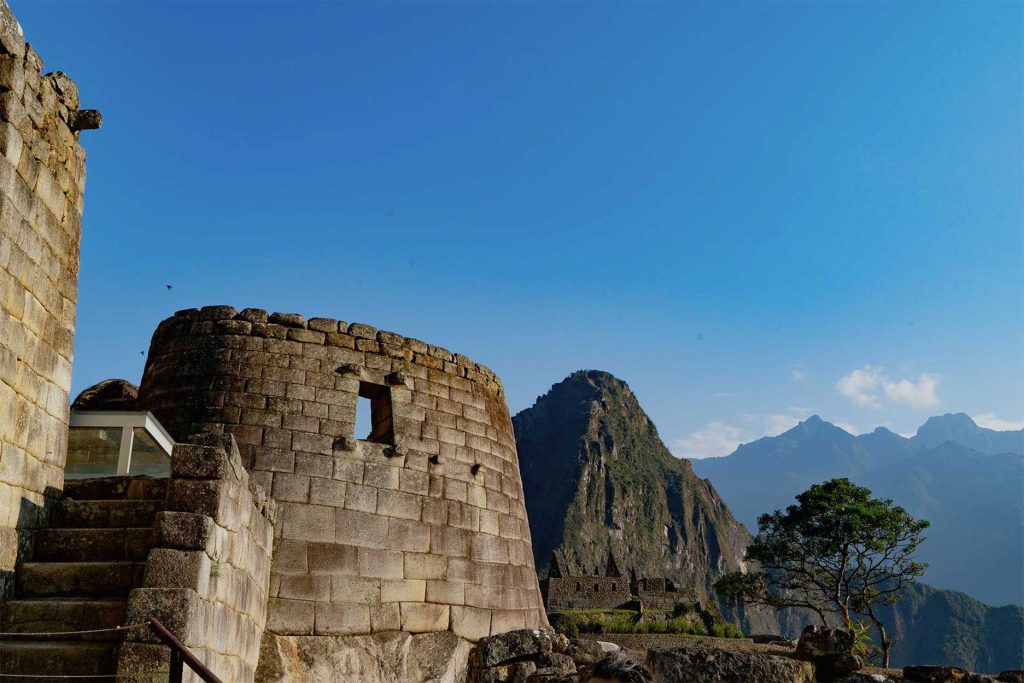
Sacred Plaza or Plaza of the Temples
The Sacred Plaza, also known as the Plaza of the Temples, is located at the heart of Machu Picchu’s urban sector and is one of the most essential and sacred spaces of the Inca citadel. This esplanade served a ceremonial purpose, functioning as a stage for rituals and offerings. It is made up of three main structures:
- Main Temple: a structure of great ceremonial importance, although today parts of it have collapsed.
- Temple of the Three Windows: famous for its finely carved stone walls and three trapezoidal openings which, according to some studies, represent the three worlds of Andean cosmology: Hanan Pacha (the upper world), Kay Pacha (the earthly world), and Ukhu Pacha (the inner world).
- The Priest’s House: also known as the Temple of the Priest or the Priestly Chamber, a structure associated with ritual activities and the ceremonial use of the plaza.
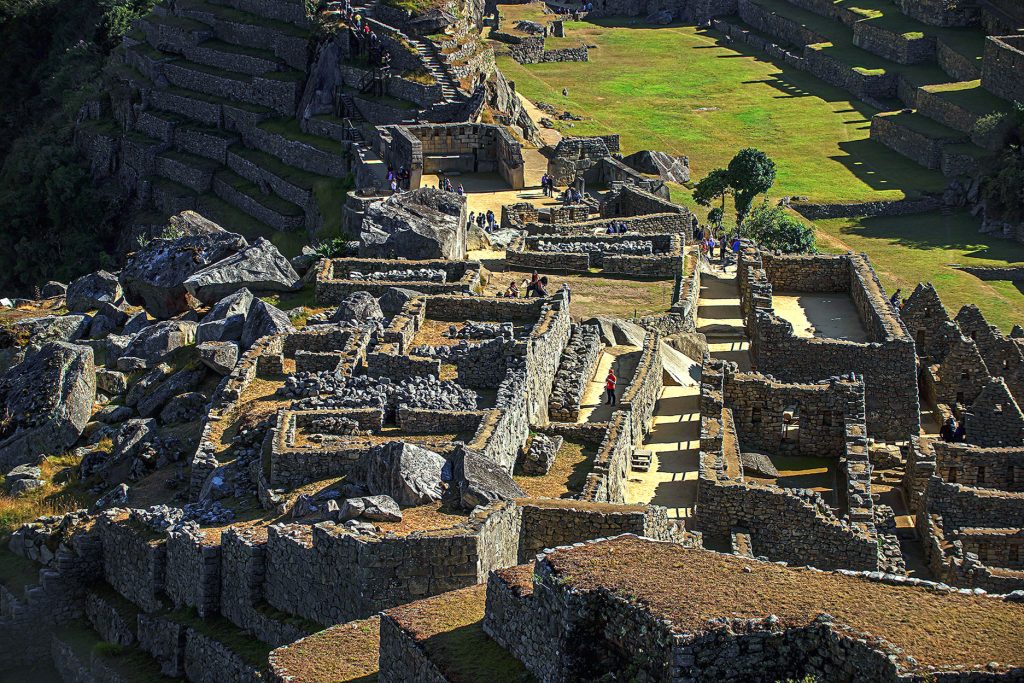
Sacred Rock
The Sacred Rock is located midway along Circuit 2 of Machu Picchu, near the entrance to Huayna Picchu Mountain. It stands out as a massive granite block over 3 meters high, with a trapezoidal base carved with remarkable precision. It is believed to have been a ceremonial space of great spiritual significance.
The silhouette of the Sacred Rock represents Yanantin, the Inca vision of harmony and unity between the natural world, architecture, and spirituality. This perception of sacredness has endured through the centuries and remains present today, as both domestic and foreign visitors still recognize it as a place imbued with special energy.
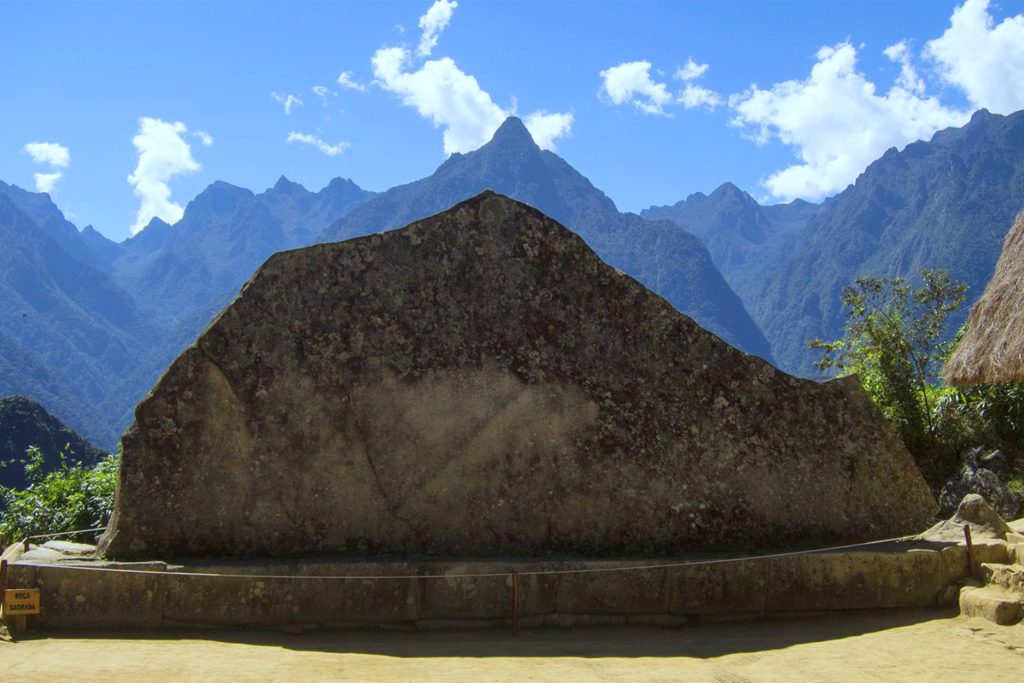
Eastern Qolqas (Storehouses)
The Eastern Qolqas are located in the lower sector of Machu Picchu; they were Inca storehouses that ensured the citadel’s supply. These rectangular structures with thatched roofs (ichu) were used to store maize, tubers, medicinal herbs, tools, and goods for exchange.
Their design was highly strategic: built in areas with steady air currents, they kept food fresh and dry, showcasing the Incas’ advanced planning and administrative efficiency.
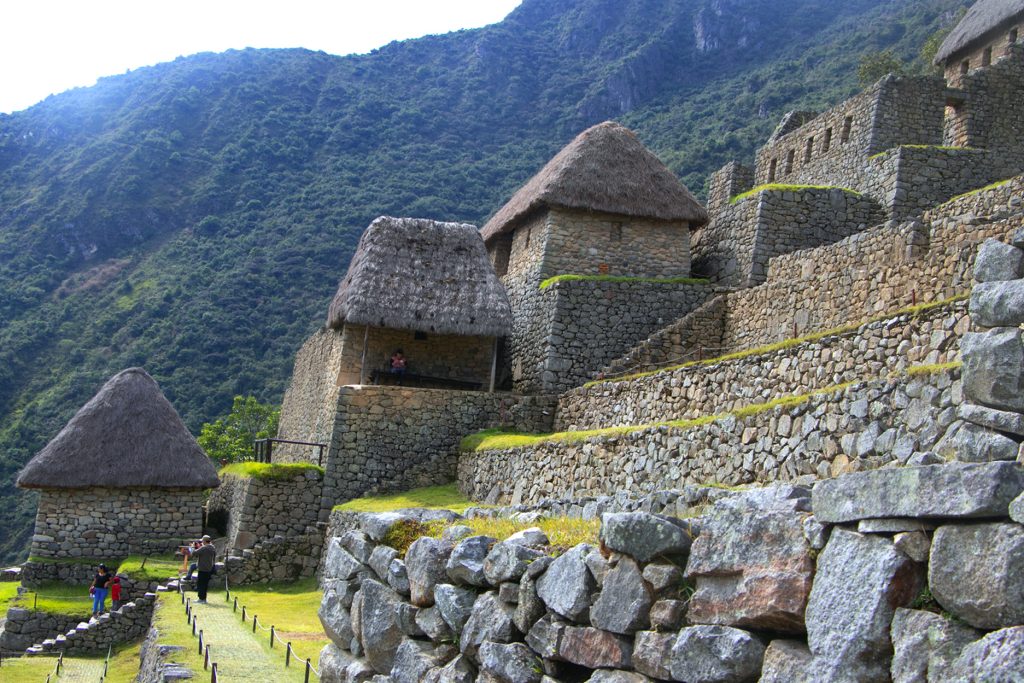
Water Mirrors Complex
The Water Mirrors Complex, also known as the Ceremonial Fountains, is located in the urban sector of Machu Picchu, near the Temple of the Sun. It consists of two circular basins carved into the rock, which the Incas filled with rainwater or spring water.
Their function was likely both ritual and astronomical: priests could observe the reflection of the sun, moon, or stars on the water’s surface, reinforcing the cosmic connection during religious ceremonies. These “mirrors” may also have been used in divination practices or as part of rituals in honor of the sun god Inti. Today, they are considered one of the citadel’s most enigmatic features, reflecting both Inca spirituality and their advanced astronomical knowledge.
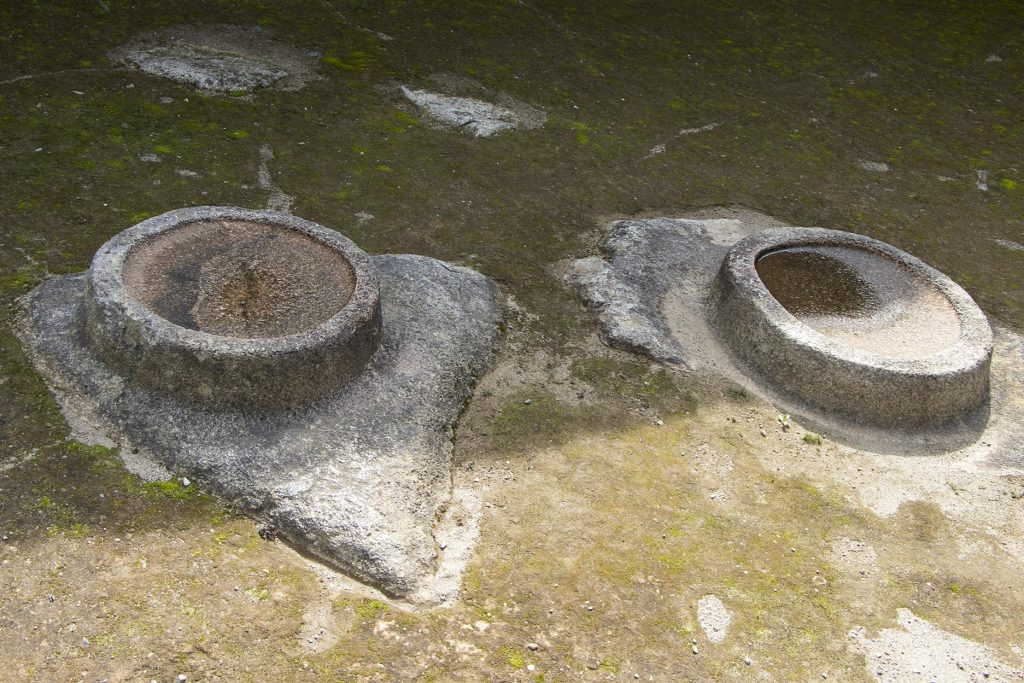
Pisonay Square
Pisonay Square is one of the largest open spaces in Machu Picchu, serving as a social and ceremonial gathering place. Its name comes from the presence of the Pisonay tree (Erythrina edulis), which still stands at the center of the square, making it an iconic landmark for visitors.
This plaza likely served as a setting for meetings, public ceremonies, and possibly community gatherings that brought together the citadel’s inhabitants. From here, access to several of Machu Picchu’s main areas was easy, making it a central hub of Inca urban organization. Today, Pisonay Square is a place where travelers can pause, admire the landscape, and appreciate how the Incas seamlessly integrated nature into their architectural spaces.
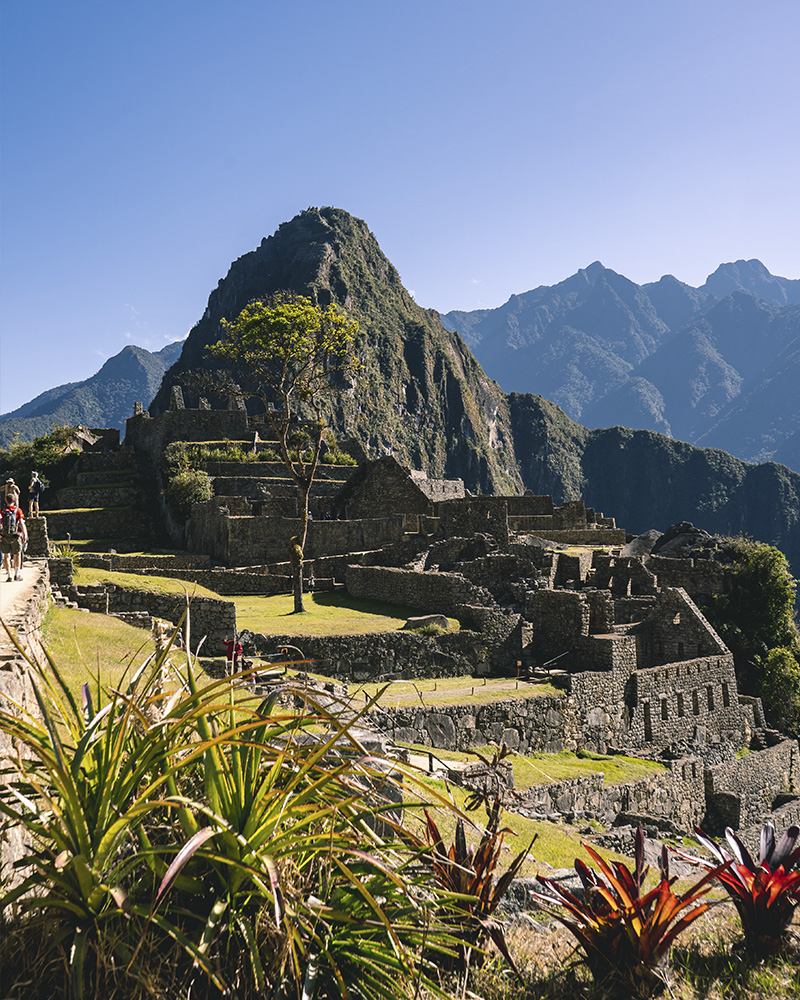
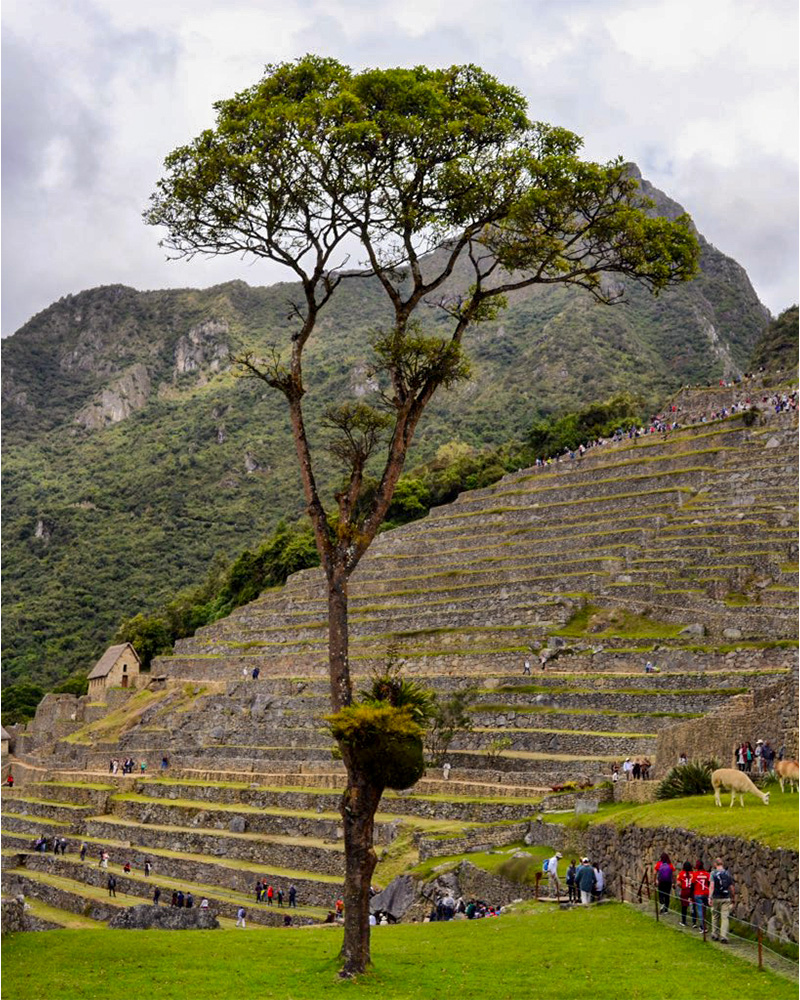
Best Time to Visit Circuit 2 Machu Picchu
The best time to explore Circuit 2 Machu Picchu is during the dry season (May–October), when the weather is more stable, with sunny days and clear skies. Specifically, the months of May, June, and September offer the perfect balance between ideal weather and fewer crowds.
The rainy season (November–April), however, has its own charm, with greener, more mystical landscapes and fewer tourists. Still, visitors must take into account the risk of rain and slippery paths. During this time, it’s recommended to bring a waterproof jacket, sturdy footwear, and plan your visit with flexibility.
Summary Table: Best Time to Visit Circuit 2 Machu Picchu 2026
| Dry Season (May – October) | Rainy Season (November – April) | |
| Climate | Sunny days with temperatures ranging from 18°C (64°F) to 25°C (77°F). | Temperatures remain mild, although at night they can drop to 7°C (44.6°F)–12°C (54°F). |
| Number of tourists | High influx of visitors, reaching over 5,000 people per day. | Lower influx, up to a maximum of 4,500 people per day. |
| Recommended Visiting Hours | Early shift (6:00–8:00 a.m.) to avoid crowds. | Mid-morning (9:00–11:00 a.m.) to enjoy favorable weather. |
| Landscapes | Clear panoramic views, ideal for classic photography. | Misty, mystical landscapes with lush vegetation. |
| Tourism Service Prices* | Accommodation, restaurants, and tours increase significantly in price. | Find the best deals and promotions on hotels and travel packages. |
| Ticket Availability | Entry tickets and train tickets sell out quickly. | Greater ease in securing tickets for your preferred date. |
* It’s worth noting that Machu Picchu entrance fees remain the same regardless of season (high or low).
Travel Tip: Both Cusco and Machu Picchu offer unique experiences depending on the season. If you want to know what to expect each month — from weather to local festivities — don’t miss our guide on the best time to visit Machu Picchu.
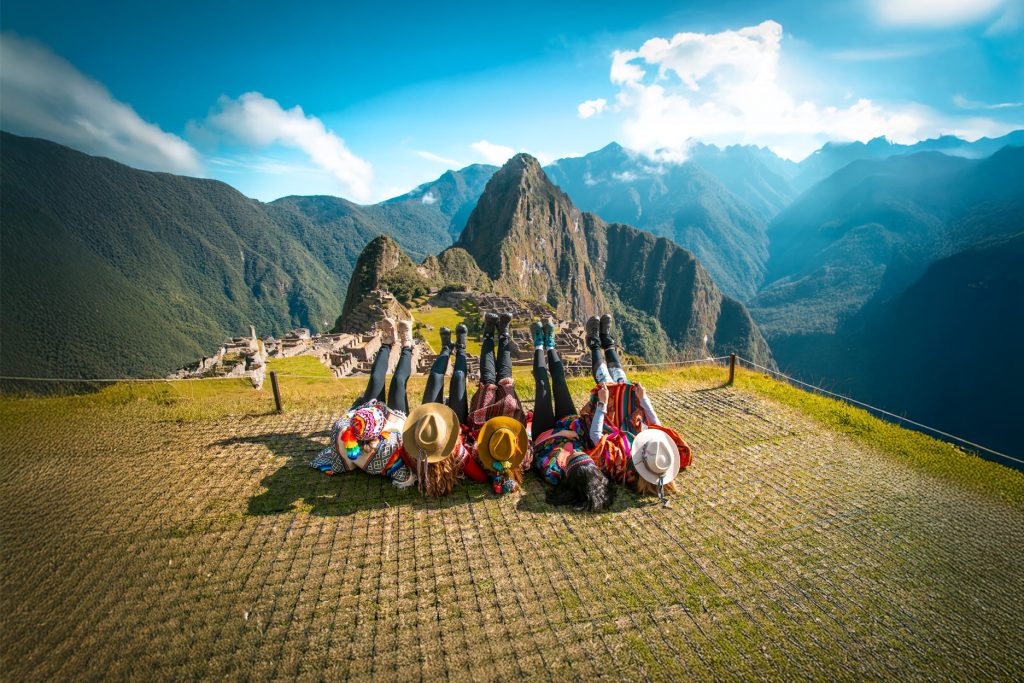
Ticket Availability by Season for Circuit 2 Machu Picchu
Circuit 2 is the most in-demand route among visitors, which makes it essential to understand ticket availability, entry times, and the allowed capacity for each season to plan your trip without setbacks. Keep in mind that tickets often sell out quickly, especially during peak months, so it’s highly recommended to book in advance. Below, we show how the daily capacity for this circuit is distributed by season.
Regular Season – Daily Capacity and Distribution
Timetables | Tickets | Circuit 2 – Classic Circuit | |||
| Route 2A | Route 2B | ||||
| Online | In person | Online | In person | ||
06:00 a.m. | 275 | 110 | 25 | 115 | 25 |
07:00 a.m. | 275 | 110 | 25 | 115 | 25 |
08:00 a.m. | 275 | 110 | 25 | 115 | 25 |
09:00 a.m. | 275 | 110 | 25 | 115 | 25 |
10:00 a.m. | 275 | 110 | 25 | 115 | 25 |
11:00 a.m. | 275 | 110 | 25 | 115 | 25 |
12:00 p.m. | 275 | 110 | 25 | 115 | 25 |
01:00 p.m. | 275 | 110 | 25 | 115 | 25 |
02:00 p.m. | 275 | 110 | 25 | 115 | 25 |
03:00 p.m. | 275 | 110 | 25 | 115 | 25 |
Total | 2750 | ||||
High Season – Greater capacity and more options
Timetables | Tickets | Circuit 2 – Classic Circuit | |||
| Route 2A | Route 2B | ||||
| Online | In person | Online | In person | ||
06:00 a.m. | 305 | 130 | 25 | 125 | 25 |
07:00 a.m. | 305 | 130 | 25 | 125 | 25 |
08:00 a.m. | 305 | 130 | 25 | 125 | 25 |
09:00 a.m. | 305 | 130 | 25 | 125 | 25 |
10:00 a.m. | 305 | 130 | 25 | 125 | 25 |
11:00 a.m. | 305 | 130 | 25 | 125 | 25 |
12:00 p.m. | 305 | 130 | 25 | 125 | 25 |
01:00 p.m. | 305 | 130 | 25 | 125 | 25 |
02:00 p.m. | 305 | 130 | 25 | 125 | 25 |
03:00 p.m. | 305 | 130 | 25 | 125 | 25 |
Total | 3050 | ||||
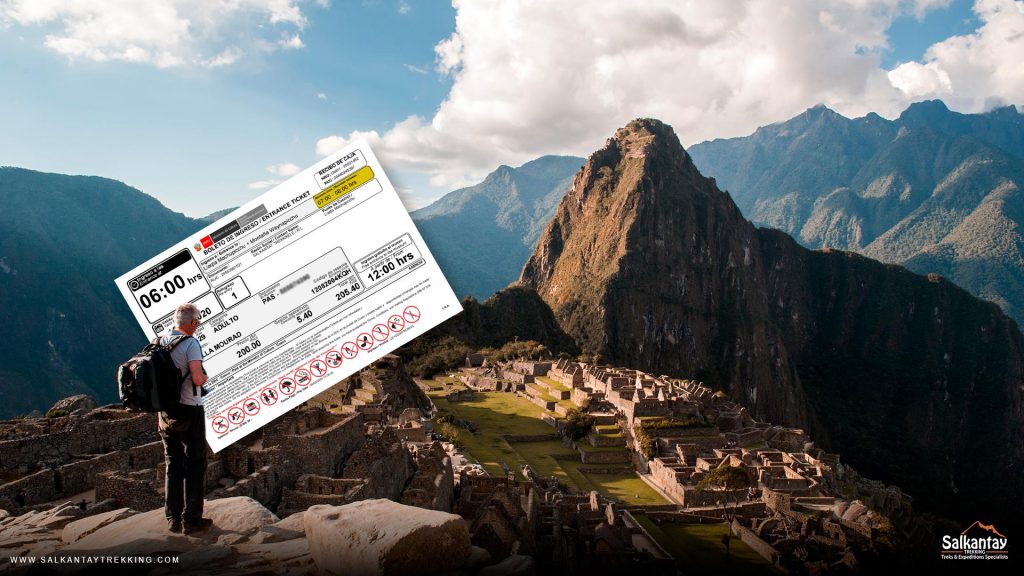
Ticket Prices for Routes 2A and 2B at Machu Picchu
By now, you may already have fallen in love with Circuit 2 of Machu Picchu, but you might be wondering how much the tickets for Route 2A and Route 2B cost. First, you should know that there are discounted rates for university students and minors, as well as for people with disabilities and war veterans. In this section, we’ll tell you everything you need to know about entrance prices to the Inca citadel in 2026.
| General | Undergraduate Student ** | Minors (3 – 17 years old) | Children under 3 years old | People with disabilities | War veterans | |
| Foreign | S/. 152.00 (approx. 43.62 USD) | S/. 77.00 (approx. 22.10 USD) | S/. 70.00 (approx. 20.09 USD) | S/. 0.00 | (see note) | (see note) |
| Peruvian | S/. 64.00 | S/. 32.00 | S/. 32.00 | S/. 0.00 | S/. 76.00 | S/. 0.00 |
| CAN countries o foreign residents* | S/. 64.00 | S/. 32.00 | S/. 32.00 | S/. 0.00 | (see note) | (see note) |
| Cusco citizen | S/. 64.00 | S/. 32.00 | S/. 32.00 | S/. 0.00 | S/. 76.00 | S/. 0.00 |
Note: The access fee for people with disabilities and war veterans varies depending on the specific characteristics of each visitor. Ticket rates depend on the category you belong to, including public, undergraduate student, minor, and others.
*If you are from Bolivia, Colombia, or Ecuador, you belong to the CAN (Andean Community of Nations) and therefore, qualify for a special discount to visit Machu Picchu.
** If you are currently enrolled as an undergraduate student, you must present a valid university ID card issued in your country both at the time of purchase and upon entry.
Important: The only authorized and secure online platform to purchase your Machu Picchu entry ticket is the official sales website of the Ministry of Culture.
How to Book Your Ticket for Circuit 2 Machu Picchu 2026
If you plan to visit Machu Picchu in 2026, it’s essential to secure your spot in advance for Circuit 2, the most complete and popular route through the citadel. Currently, there are four official ways to purchase your ticket, each offering advantages depending on the type of traveler you are. Below, we explain the options and how to choose the one that best fits your experience.
1. Advance Online Reservation (the most recommended option)
The most practical and reliable way to get your Machu Picchu ticket is through the official website. This system allows you to book from anywhere with just a few clicks, guaranteeing your access several months in advance — something crucial during peak season (May to October).
How to book?
- Access the official Machu Picchu portal or the website tuboleto.cultura.pe.
- Fill in your details, choose the date, time slot, and type of ticket (Machu Picchu, Huayna Picchu, Montaña, etc.).
- You will receive a reservation code and an email with the link to make the payment.
Payment methods
- Online card payment: The fastest and most convenient option. The Ministry of Culture’s website only accepts cards with Visa verification.
- Banco de la Nación: You can pay in cash at any branch within Peru.
- Offices in Cusco: You can also pay in person, with cash or card, at the Ministry of Culture office (Garcilaso Street s/n).
2. In-Person Purchase in Cusco (less recommended)
Another option is to buy your ticket directly at the Ministry of Culture offices in Cusco, located in Casa Garcilaso, near Plaza Regocijo. While this might seem convenient for some travelers, it’s not the most recommended option because tickets usually sell out quickly, and you risk not finding availability for your desired date.
Additionally, this method requires extra time to get there and complete the process in person — something impractical if you’re on a tight itinerary. For this reason, it’s advised only as a last resort if you can’t book online.
3. In-Person Purchase in Aguas Calientes (less recommended)
You can also purchase tickets in Aguas Calientes at the Ministry of Culture office, located on Pachacutec Avenue, near the Main Square. However, this option is not recommended either, since ticket availability there is usually very limited, especially during peak season.
4. Through a Tour Operator (highly recommended)
If you’re looking for greater comfort and peace of mind, hiring an authorized tour operator is one of the most recommended options. Agencies like Salkantay Trekking take care of the entire process: purchasing your tickets, arranging transportation, accommodation, and even guides — turning your trip into a well-organized, hassle-free experience.
In addition, tour operators often offer personalized packages, ranging from the classic visit to Machu Picchu to treks along the Inca Trail or hikes up the nearby mountains. It’s essential, however, to book in advance and verify that the agency is authorized and has good reviews, ensuring both safety and a quality experience.
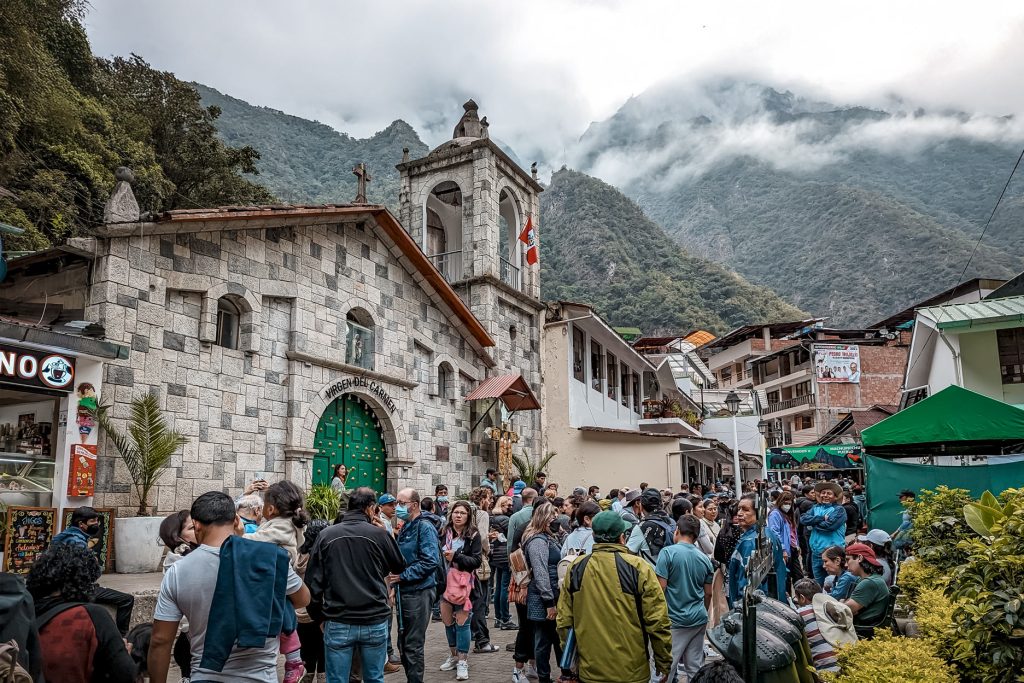
How to Get from Aguas Calientes to Machu Picchu?
If you’re already in Aguas Calientes (Machu Picchu Town), the last step is reaching the entrance of the majestic Inca citadel. There are two main options: taking the official tourist bus or embarking on a challenging hike that allows you to connect with nature.
1. Bus to Machu Picchu from Aguas Calientes
The Consettur tourist bus is the only authorized transport that connects Aguas Calientes with the entrance gate to Machu Picchu.
- Travel time: 25 to 30 minutes
- Departures: Every 5–10 minutes, starting at 5:30 a.m.
- Where to buy tickets:
- Online: via the official Consettur website.
- In person:
- Cusco: Av. Pardo Paseo de los Héroes 827, Cusco 08000.
- Aguas Calientes: Av. Hermanos Ayar S/N (antes del Puente Ruinas).
- Cusco: Av. Pardo Paseo de los Héroes 827, Cusco 08000.
- Online: via the official Consettur website.
It’s highly recommended to purchase your ticket in advance, especially during high season, to avoid long lines.
2. Hike to Machu Picchu from Aguas Calientes
For more adventurous travelers, there’s the option of hiking up to Machu Picchu via a well-marked trail and stone stairways. The route is over 8 km (5 miles) long with an elevation gain of 400 meters (1,300 ft), making it a challenging climb.
The trail starts at Puente Ruinas, just a few minutes from Aguas Calientes. From there, the ascent takes about 1 hour 30 minutes to 2 hours, depending on your pace and fitness level.
Practical tips:
- Start early to make the most of daylight.
- Bring water, sunscreen, and proper hiking shoes.
- Keep in mind that you’ll arrive somewhat tired, which may affect your visit inside the citadel.
Travel Tip: The best combination is to go up by bus (30 min) and walk down (up to 2 hours). This way, you’ll save energy for exploring Machu Picchu and, if you plan to visit an additional mountain such as Huayna Picchu, Huchuy Picchu, or Machu Picchu Mountain, you’ll avoid extreme fatigue.
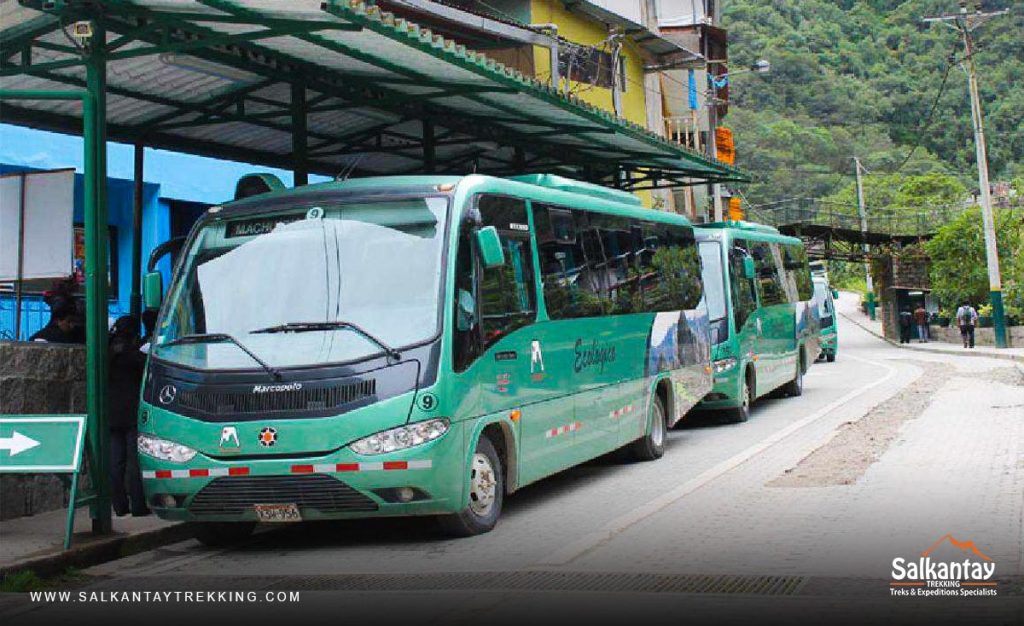
Circuit 2 Machu Picchu: Route 2A vs. Route 2B
| Characteristics | Route 2A – Classic Route | Route 2B – Lower Terrace |
| Classic photo spot | Panoramic view from a terrace below the Guardian’s House | Panoramic view from the Guardian’s House |
| Distance | Approx. 1.5 km / 0.93 miles | Approx. 1.5 km / 0.93 miles |
| Duration | Up to 2 hours 30 minutes | Up to 2 hours 30 minutes |
| Difficulty | Modérate | Moderate, with some uphill sections |
| Terrain | No difficulties, well-marked path | No difficulties, well-marked path |
| Ticket availability | Sells out quickly; buy 2–3 months in advance | Sells out quickly; buy 2–3 months in advance |
| Available time slots | 10 time slots, from 6:00 a.m. to 3:00 p.m. | 10 time slots, from 6:00 a.m. to 3:00 p.m. |
| Recommended age | Suitable for all ages | Suitable for all ages |
| Recommended profile | Travelers seeking less physical effort and deeper cultural immersion | First-time visitors to Machu Picchu, panoramic view lovers |
| Archaeological highlights | Temple of the Sun, Plaza of the Temples, Sacred Rock, Twelve Niches, Eastern Qolqas, Water Mirrors Complex, Pisonay Plaza | Plaza of the Temples, Sacred Rock, Twelve Niches, Eastern Qolqas, Water Mirrors Complex, Pisonay Plaza |
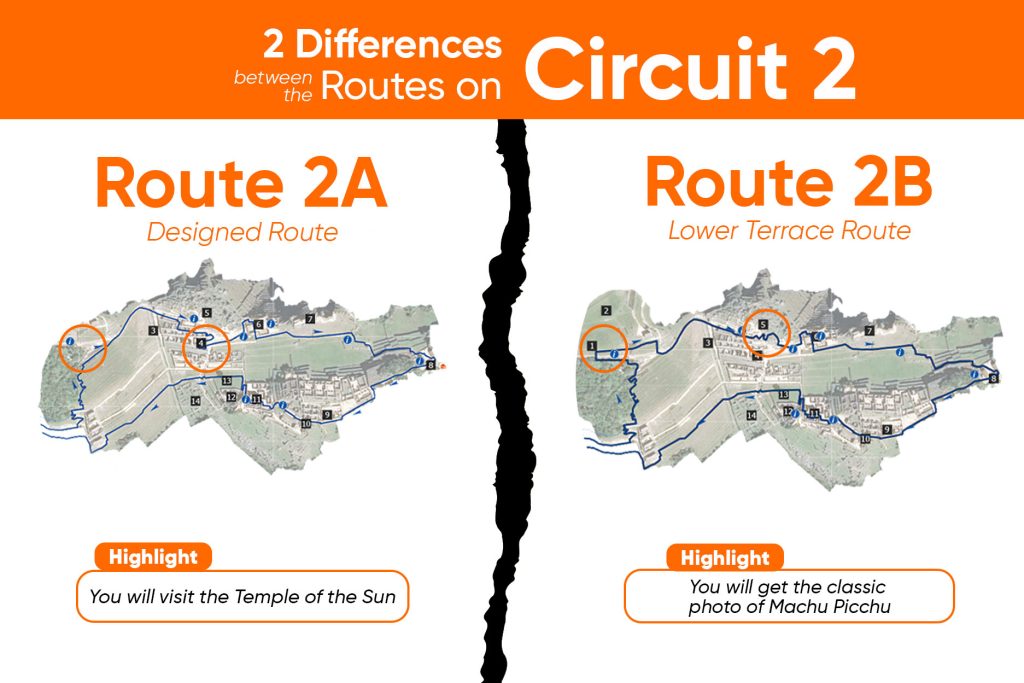
Other Circuit Options in Machu Picchu
Did you miss out on tickets for Circuit 2 of Machu Picchu on your desired date? Don’t worry — Circuit 1 and Circuit 3 are also fantastic options to experience the world’s wonders.
- Circuit 1 – Panoramic: This route covers the upper part of the Inca citadel and offers the most iconic views. In addition to the classic postcard from the Guardian’s House, this circuit allows you to explore terraces and less-crowded archaeological spots that are just as fascinating. Discover all the details in our complete guide to Circuit 1 of Machu Picchu.
- Circuit 3 – Royalty: This route explores the lower part of the historic sanctuary, with excellent opportunities to visit the iconic Huayna Picchu and Huchuy Picchu mountains. Find out everything in our complete guide to Circuit 3 of Machu Picchu.
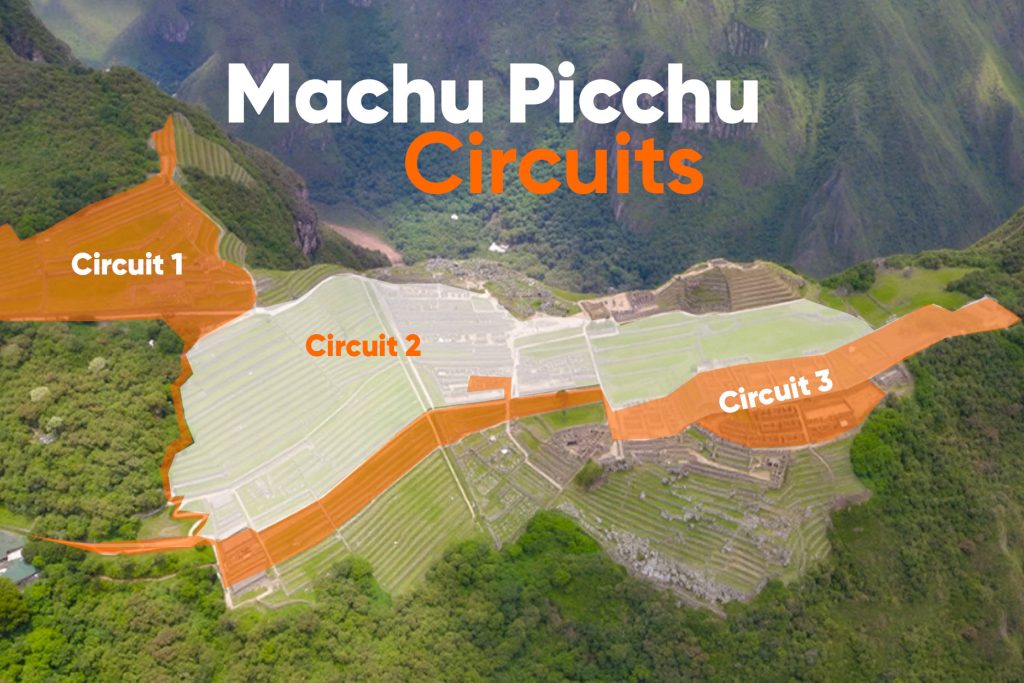
Recommended Experiences to Complement Your Visit
After exploring Circuit 2 Machu Picchu, you’ll probably still have a few hours free before taking the train back. That time is perfect to discover, with the help of a guide, the wonders of Aguas Calientes, the last town before reaching the Inca citadel. Here are some experiences that will make your trip even more memorable:
- Climb Putucusi Mountain: On this adventure, you’ll enjoy safe climbing activities and gain a privileged view of Machu Picchu from a lesser-known and unique perspective.
- Relax in the hot springs: Enjoy the pools in Machu Picchu Pueblo, with waters ranging from 38 °C (100 °F) to 46 °C (114 °F) — perfect for relaxing your muscles after visiting the Inca citadel.
- Explore the Aguas Calientes handicraft market: An ideal place to buy authentic souvenirs handmade by local artisans.
- Taste the local cuisine: Peru is world-renowned for its gastronomy. Don’t miss the chance to try traditional dishes and flavors that delight palates everywhere, completing your experience at the world wonder.
- Visit the Manuel Chávez Ballón Museum: For Inca culture enthusiasts, this is the perfect place to deepen your knowledge and see firsthand the history, tools, handicrafts, textiles, and other collections under conservation.
- Explore the Butterfly House: Here you’ll learn why Machu Picchu is also a renowned destination for biologists worldwide. The Butterfly House will amaze you with more than 500 known species, along with some endemic to the area.
- Wander through the Machu Picchu Botanical Garden: This space will leave you in awe with its more than 123 orchid species, out of the 425 registered in the Historic Sanctuary and the Inca Trail.
- Discover the Mandor Waterfall: The falls and their surroundings will transport you to a movie-like setting, surrounded by lush vegetation, birds, and an atmosphere of absolute peace.
Travel Tip: Discover more activities to do in Aguas Calientes in our Guide to Machu Picchu Pueblo. If your schedule allows, we recommend dedicating one or two full days to exploring all its corners and falling even more in love with the cultural and natural richness that surrounds this world wonder.
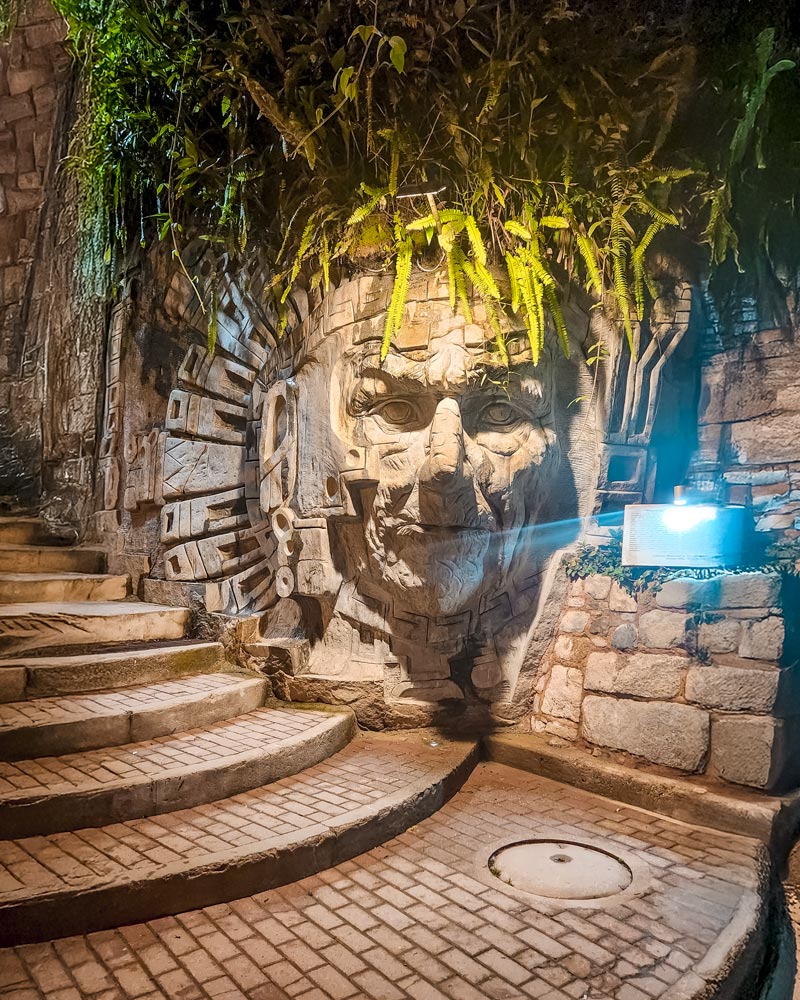
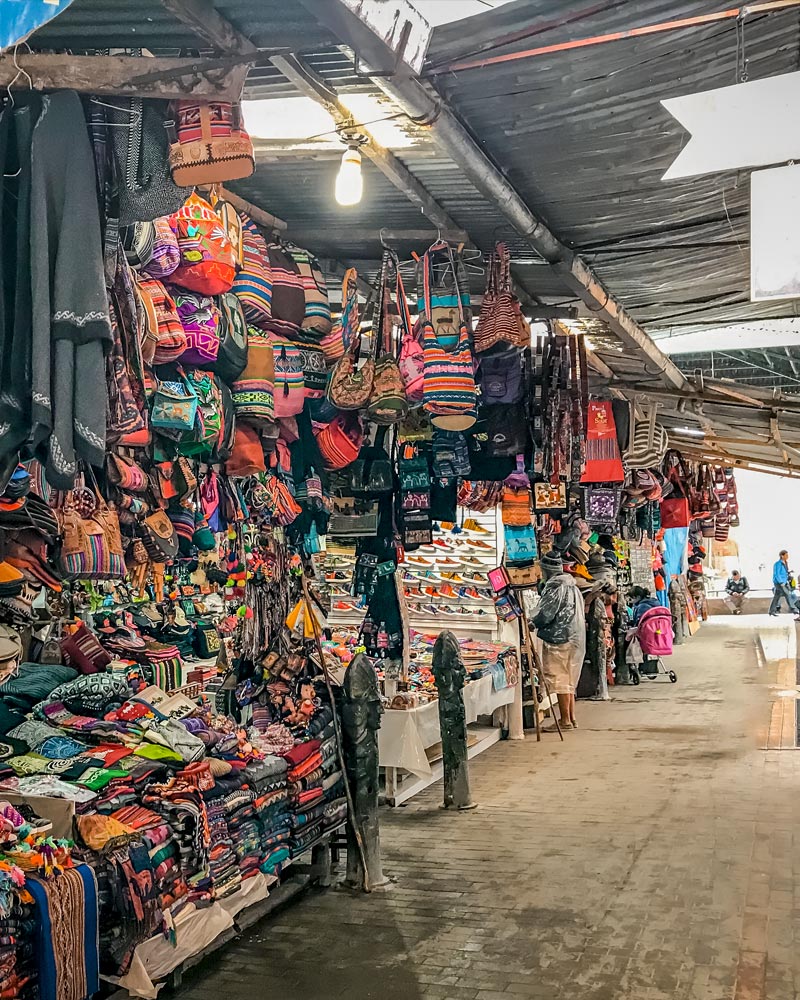
Now you know why Circuit 2 is the best way to discover Machu Picchu. Don’t let tickets sell out — book with Salkantay Trekking and enjoy the best experience in one of the world’s wonders.
Frequently Asked Questions
1. Which is the best circuit in Machu Picchu?
Circuit 2 is considered the best option for first-time visitors, as it allows you to enjoy panoramic views and enter the Inca citadel.
2. What is the advantage of Circuit 2 Machu Picchu?
The main advantage of Circuit 2 is being able to enter the Inca citadel and experience up close the greatness of its architecture, traditions, and spirituality.
3. What is the disadvantage of Circuit 2 Machu Picchu?
The main disadvantage is that Circuit 2 of Machu Picchu will not allow you to explore the lower part of Machu Picchu or the sacred mountains that surround it.
4. How long is Circuit 2 Machu Picchu?
The route takes on average 2 hours 30 minutes to 3 hours, depending on your pace and photo stops. The approximate distance is 1.5 km (0.93 miles).
5. Is Circuit 2 Machu Picchu worth it?
Yes. It’s the most recommended for first-time visitors, as it combines panoramic views with access to the most critical sectors of the Inca citadel. It offers a complete experience.
6. Does Circuit 2 Machu Picchu include the Intihuatana?
No. Unfortunately, since 2024, the Peruvian government has closed access to the Intihuatana — the famous ceremonial stone that functioned as a solar clock — to protect it from wear caused by the high number of tourists. None of the circuits currently includes this archaeological site.
7. Can you do two circuits of Machu Picchu in the same day?
Yes, you can do two circuits in one day if you purchase two tickets for different time slots that allow re-entry.
8. Where is the classic photo of Machu Picchu taken?
The classic photo of Machu Picchu is taken from the Guardhouse, a construction included in the routes of Circuit 1 and Circuit 2, with slight variations in the panoramic viewpoint.
9. What is the difference between the Machu Picchu circuits?
- Circuit 1: Short route along the upper section of Machu Picchu, more panoramic, ideal for those who wish to visit Inti Punku (Sun Gate), the Inca Bridge, or Machu Picchu Mountain.
- Circuit 2: The most complete, combining panoramic views with access to central sectors.
- Circuit 3: Short route with access to the lower part of the citadel, recommended for those who also want to climb Huayna Picchu, Huchuy Picchu Mountain, or visit the Great Cave.
10. Why is Circuit 2 considered the most complete?
Circuit 2 is considered the most complete because it provides access to most of the essential sectors: agricultural terraces, the Temple of the Sun, Intihuatana, the Main Plaza, residential compounds, and the best panoramic views.
11. What is the difference between Route 2A and Route 2B within Circuit 2?
- Route 2A: Skips the climb to the viewpoint, heading more directly to the lower and central areas of the citadel; includes entry to the Temple of the Sun.
- Route 2B: This route includes a visit to the upper section, featuring the classic viewpoint from the Guardhouse.
12. What is the best time of year to do Circuit 2?
The dry season (May to October) is the most recommended for its stable weather and clear skies. However, during the rainy season (November to April), there are fewer visitors, and the landscape is greener.
13. How much do Circuit 2 Machu Picchu tickets cost?
For 2026, the reference prices are:
- Foreigners – Adults: S/ 152 (approx. USD 43)
- Foreigners – University students: S/ 77 (approx. USD 22)
- Foreigners – Minors: S/ 70 (approx. USD 20)
- Peruvians and CAN (Andean Community) citizens: from S/ 64
(Prices may vary; always check the official website of the Peruvian Ministry of Culture for the latest updates.)
14. How many tickets are available per day for Circuit 2?
Currently, Circuit 2 Machu Picchu has 3,050 tickets available in high season and 2,750 in regular season. These tickets are divided into 10 time slots, allowing up to 305 people to enter simultaneously for this circuit of the sanctuary.
15. Is Circuit 2 suitable for children and older adults?
Yes, Circuit 2 Machu Picchu is suitable for children and older adults. The route combines flat areas with several stone stairways, some of which are steep and slippery during the rainy season. For young children and seniors, it is recommended to go at a slow pace, wear good non-slip footwear, and use trekking poles if needed.
16. Can I switch circuits after purchasing my ticket?
No. Machu Picchu tickets are personal and non-transferable, and they are only valid for the circuit and time slot selected.
17. Do I need to hire a guide for Circuit 2?
It is not mandatory to hire a guide to enter Circuit 2 Machu Picchu, but it is recommended to fully understand the history, architecture, and spirituality of this magnificent Inca citadel.
18. Which Routes to Combine to Better Explore Machu Picchu?
If you have the chance to purchase tickets for more than one route, and the physical condition to fully explore Machu Picchu, here are the best combinations to enjoy the Inca citadel to the fullest:
- Route 2B (Lower Terrace) + Route 3A (Huayna Picchu Mountain)
- Route 2B (Lower Terrace) + Route 3C (Great Cave)
- Route 2B (Lower Terrace) + Route 3D (Huchuy Picchu)
- Route 2A (Classic Route) + Route 1A (Machu Picchu Mountain)
- Route 2A (Classic Route) + Route 1C (Inti Punku Gate)
- Route 2A (Classic Route) + Route 1D (Inca Bridge)

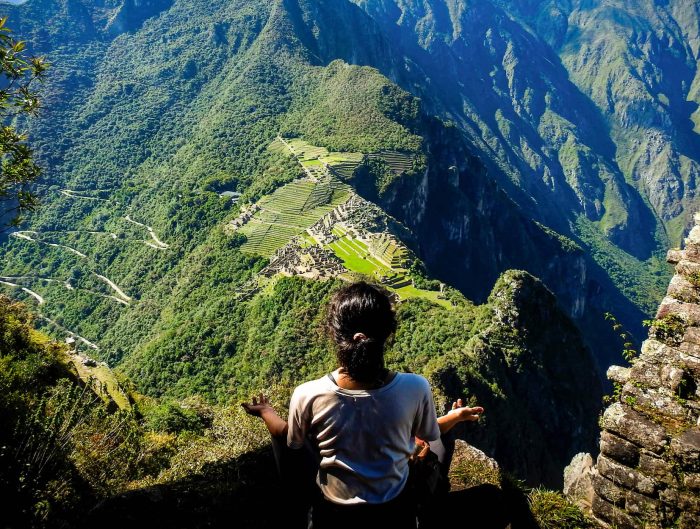
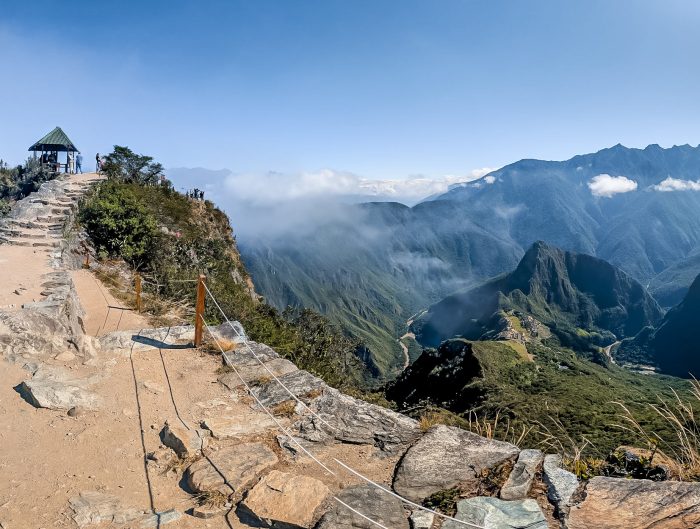
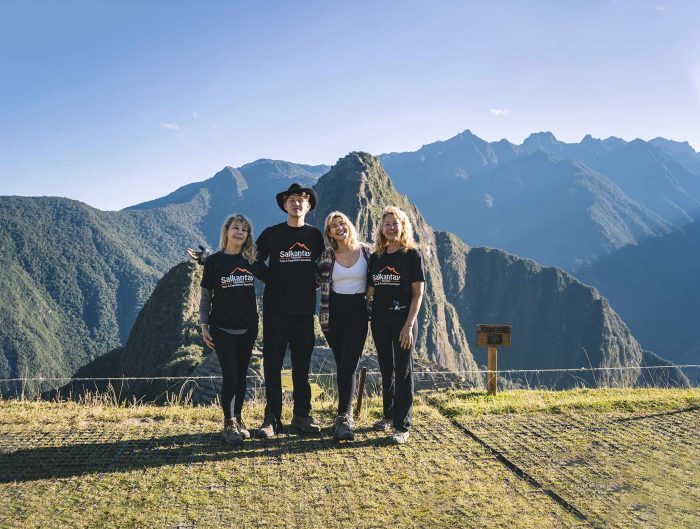
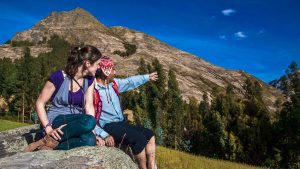
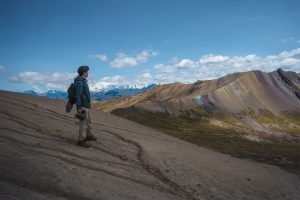
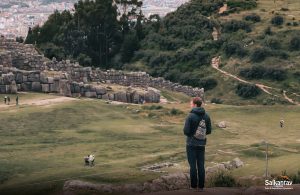
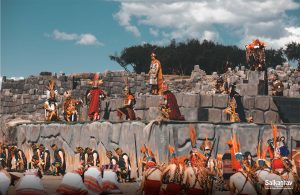
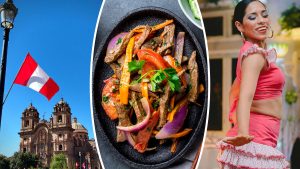

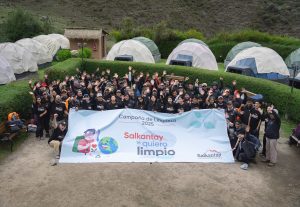

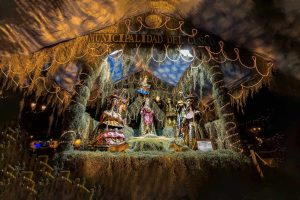
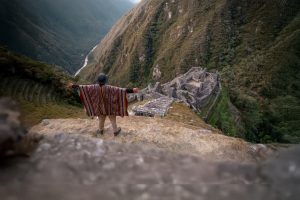
Leave A Reply